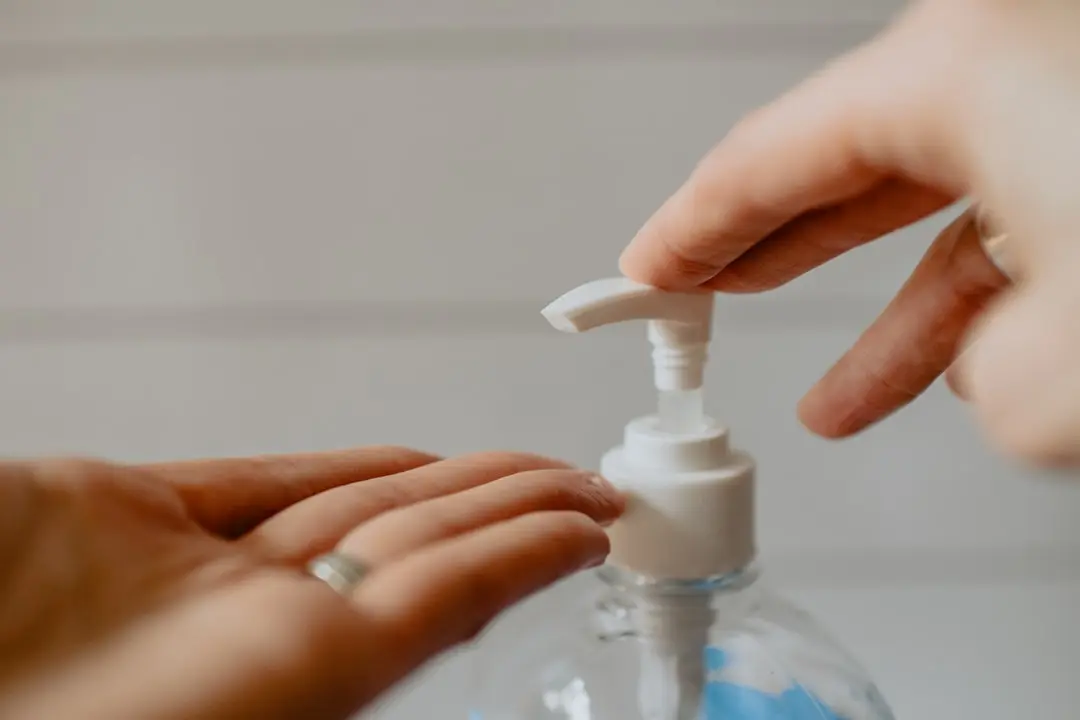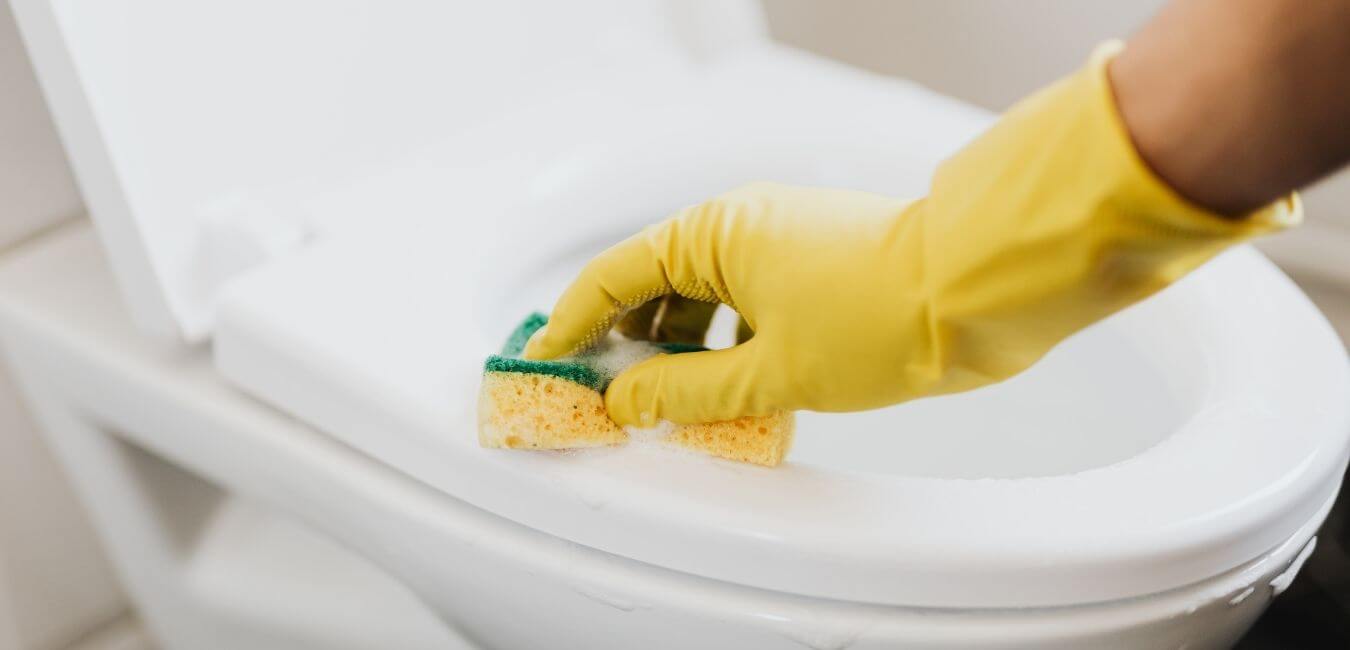Unsightly yellow stains have invaded your bathtub, robbing it of its pristine whiteness. This stubborn discoloration is a common issue that can be tackled with common household items such as baking soda and vinegar.
Within this article, you’ll uncover simple yet effective methods to restore the long-lost shine of your tub. Ready for a sparkling clean transformation? Dive in!
Key Notes
- Yellow stains in bathtubs can be caused by hard water deposits, soap scum, mold, mildew growth, or the use of certain cleaning products.
- Different types of stains include hard water stains, rust stains, soap scum, mold and mildew stains, and mineral deposits.
- Methods to remove yellow stains from a bathtub include using a vinegar and water solution, creating a paste with baking soda and hydrogen peroxide, or using an abrasive cleanser for rust-colored and blue-green stains.
- Regular cleaning and maintenance of bathtubs are important to prevent yellow stains from forming.
Understanding Yellow Stains in Bathtubs

Yellow stains in bathtubs can be caused by a variety of factors, such as hard water deposits, mold and mildew growth, or the use of certain cleaning products. Different types of stains can also appear on bathtub surfaces, including rust-colored or blue-green discoloration.
1. Causes of yellowing in bathtubs
Bathtubs can turn yellow for many reasons. Hard water leaves behind minerals that make a dull, yellow film. Soaps and shampoos can build up over time and also cause this color change.
Mildew or mold may grow in your tub if you don’t clean it often enough. The bathtub material may even start to break down as it gets old, leading to stains. A smoking habit can leave behind nicotine stains too! It is important to know the cause of the yellowing so you choose the best way to clean your tub!
2. Types of stains and discoloration
There are different types of stains and discoloration that can affect a bathtub. Here are some common ones:
- Hard water stains: These appear as white or yellowish spots caused by minerals in the water.
- Rust stains: These are reddish-brown stains caused by iron deposits in the water or rusty pipes.
- Soap scum: This is a greasy residue left behind by soap and body oils, which can turn yellow over time.
- Mold and mildew stains: These are black or dark green stains caused by moisture and lack of ventilation.
- Mineral deposits: These are crusty, white, or brownish build-ups caused by minerals in the water.
Methods to Remove Yellow Stains from Bathtubs

There are several effective methods you can use to remove yellow stains from your bathtub, including using a vinegar and water solution, creating a paste with baking soda and hydrogen peroxide, or using an abrasive cleanser for rust-colored and blue-green stains.
1. Using vinegar and water solution
To remove yellow stains from your bathtub, you can use a simple vinegar and water solution. Here’s how:
- Fill the bathtub with warm water.
- Add white vinegar to the water in a 1: 1 ratio (equal parts vinegar and water).
- Mix the solution well, ensuring that the vinegar is evenly distributed.
- Let the solution sit in the tub for about 30 minutes to an hour.
- After soaking, drain the tub and rinse it thoroughly with clean water.
- Use a soft cloth or sponge to wipe away any remaining stains or residue.
2. Baking soda and hydrogen peroxide paste
To remove yellow stains from your bathtub, you can make a paste using baking soda and hydrogen peroxide. Mix a small amount of baking soda with hydrogen peroxide to create a thick paste. Apply the paste to the yellowed areas of your bathtub using a sponge or cloth. Let it sit for about 15-20 minutes.
Then, scrub the stained areas gently with a soft brush or sponge. Rinse thoroughly with water to remove any residue. This method can help whiten your bathtub and remove stubborn stains effectively.
3. An abrasive cleanser for rust-colored and blue-green stains
To remove rust-colored and blue-green stains from your bathtub, you can use an abrasive cleanser. Here are some steps to follow:
- Choose an abrasive cleanser that is safe for your bathtub material (plastic, fiberglass, or acrylic).
- Wet the stained area of the bathtub with water.
- Sprinkle the abrasive cleanser directly onto the stain.
- Use a sponge or scrub brush to gently scrub the stained area in a circular motion.
- Rinse the area thoroughly with water.
- Repeat the process if necessary until the stains are completely removed.
Tips for Regular Cleaning and Maintenance of Bathtubs
– Clean your bathtub regularly to prevent yellow stains from forming.
1. Preventing yellow stains with regular cleaning
To prevent yellow stains in your bathtub, make sure to clean it regularly. Here are some tips:
- Wipe down the bathtub after each use with a non-abrasive cloth or sponge.
- Use a mild bathroom cleaner or a mixture of dish soap and warm water to remove any dirt or grime.
- Pay special attention to areas where soap scum tends to build up, like around the drain and along the edges of the tub.
- Rinse the bathtub thoroughly after cleaning to remove any leftover residue.
- Dry the tub completely to prevent moisture from causing stains or discoloration.
- Consider using a bathtub mat or liner to protect the surface from scratches and reduce the risk of staining.
- Avoid using abrasive cleaners or scrub brushes that can damage the finish of your bathtub.
2. Proper maintenance and care for a white bathtub
To keep your white bathtub looking bright and clean, here are some important tips:
- Regular cleaning: Clean your bathtub at least once a week to prevent stains from building up. Use a mild cleaning solution or a mixture of water and vinegar.
- Avoid abrasive cleaners: Harsh chemicals and abrasive cleaners can damage the surface of your bathtub. Stick to gentle cleaners that are safe for use on acrylic, fiberglass, or plastic tubs.
- Rinse after each use: After taking a bath or shower, rinse the tub thoroughly to remove any soap residue or dirt. This helps prevent scum and stains from forming.
- Dry after use: To prevent water spots and mineral buildup, dry the tub with a soft cloth or towel after each use. This will also help maintain its shine.
- Use non-slip mats: Placing non-slip mats in your bathtub can help prevent scratches and reduce the chances of slipping. Be sure to clean them regularly as well.
- Avoid harsh scrubbing: When cleaning your tub, avoid using abrasive scrub brushes or pads that can scratch the surface. Opt for softer clothes or sponges instead.
Frequently Asked Questions

1. What causes a bathtub to turn yellow?
A bathtub can turn yellow due to mineral deposits, hard water stains, or aging of the bathtub surface.
2. How can I whiten a yellowed bathtub?
You can whiten a yellowed bathtub by using cleaning solutions like baking soda and vinegar, bleach, or commercial bathroom cleaners specifically designed for removing stains.
3. Can I use natural ingredients to whiten my yellowed bathtub?
Yes, you can use natural ingredients like lemon juice or hydrogen peroxide mixed with baking soda to create a paste that helps remove yellow stains from the bathtub’s surface.
4. Is it possible to prevent my bathtub from turning yellow again?
To prevent your bathtub from turning yellow again, regularly clean and maintain it by wiping it down after each use and avoiding abrasive cleaners that may damage the surface. Additionally, using a bath mat or non-slip stickers in the tub can help reduce staining caused by constant contact with soap and water.
Conclusion and final thoughts 💭
In conclusion, removing yellow stains from a bathtub is possible with the right methods and materials. Using vinegar and baking soda or hydrogen peroxide can help whiten a yellowed plastic, fiberglass, or acrylic tub.
Regular cleaning and maintenance are also important for preventing future stains. With these tips, you can restore the color of your bathtub and keep it looking clean and fresh.






